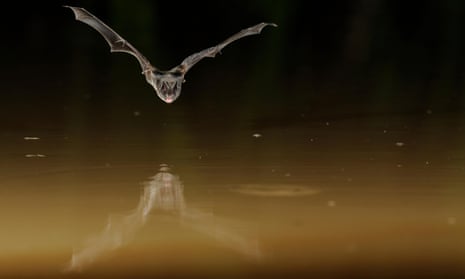An ecological report revealing that a new road would imperil one of Britain’s rarest mammals was rewritten to remove the warning.
The proposed Western Link road in Norwich will cut through a maternity roost of barbastelle bats and put at risk a wider “super colony” that lives and feeds in the Wensum Valley.
But warnings in a survey undertaken for Norfolk county council by an independent environmental consultant were deleted from the report by another consultancy before it was published by the council.
The council is planning to build the £153m Western Link across the Wensum, a chalk river that is an internationally designated special area of conservation (SAC) and home to rare species, wetlands and ancient woodlands.
The revisions to the bat report were made after surveys by ecological consultant Dr Charlotte Packman discovered that the Northern Distributor Road (NDR), a dual carriageway around part of Norwich that opened in 2018, led to the probable disappearance of two out of three colonies of barbastelles.
The barbastelle is one of only two species of breeding bat in Britain that are listed as “near threatened” globally on the IUCN Red List of endangered species. One of Norfolk’s biggest populations is close to both the NDR and its proposed extension, the Western Link. All bats and their roosts are protected by law.
In the original report, Packman warned that the Western Link “has significant potential to negatively impact” the barbastelle colony in the Wensum valley.
In the rewritten version of the report, which was revised by environmental consultants Mott Macdonald, all discussion of the Western Link road was removed. Despite protests by Packman, Mott Macdonald submitted the revised version of the report to Norfolk county council, which later published it online.
Packman later conducted an independent survey of woods through which the Western Link will pass. She said there was a large maternity roost of barbastelle bats in a wood that would be bisected by the new road, which council surveys had not revealed.
A further report found that mitigation carried out by the council to sustain bat populations close to the NDR, including seven bat gantries – bridge-like structures supposed to guide bats safely over new highways – costing £1m, and a £1.2m green bridge, was largely ineffective.
According to national guidelines, at least 90% of bats should be flying at a safe height within five metres of the bat bridge, and population levels should be similar to those recorded before construction. But more than 40% of bats were crossing at unsafe heights, the green bridge was used by just 13 bats and no bats used a bat underpass because it was flooded.
In a statement, Mott Macdonald said: “The original report provided by our subconsultant contained information that was outside of the scope of the original commission, in that it referenced the Norwich Western Link (NWL), rather than the operational Norwich Northern Distributor Road (NDR).
“A revised report relating to NDR was prepared that removed the out-of-scope information so that it met the original client brief. However, recognising the usefulness of the out-of-scope information to the client’s future NWL scheme, we provided this to the council.”
A spokesperson for Norfolk county council confirmed it was fully aware of “the relevant survey details” relating to threats to barbastelle bat colonies posed by the Western Link. Mott Macdonald is not undertaking environmental surveys for the new road.
Of the barbastelle bat colony discovered on the proposed route of the Western Link, the council said it would “welcome sight of this data” and added: “Bats and barbastelle bats in particular are known to switch roosts on a very frequent basis, and we will continue to conduct surveys to further inform our work and provide up-to-date information ahead of submitting the planning application.”
The council confirmed it would not be building any bat gantries for the new road but it planned to install green bridges and bat underpasses.
Packman has launched a crowdfunder for a comprehensive independent bat survey of the area affected by the Western Link.
Fiona Matthews, professor of environmental biology at the University of Sussex, said bat gantries were now seen as greenwashing, with scientific evidence repeatedly showing that expensive bat mitigation for new roads did not work.
She said: “Over and over again we’re getting these sorts of reports. We need some really serious effort to make these bat crossings more effective, or just decide that this is not an effective use of money for conservation. We need to think about other measures to stop these developments having a negative impact on the bat population – there are lots of other ways you could spend money on bat conservation effectively.”
David Pett of the Stop the Wensum Link campaign said the new road failed to meet Britain’s legal obligations to prevent habitat loss and climate change. “The habitat regulations assessment of the plan says the road must not adversely affect the integrity of the River Wensum special area of conservation. Even before the discovery of the barbastelle roosts this set a high bar, unlikely to be met. Also, the road would add to carbon emissions and it has not been assessed against the Paris agreement. We expect this to be a showstopper in the future for such high-carbon transport schemes after the recent Heathrow judgment.”
